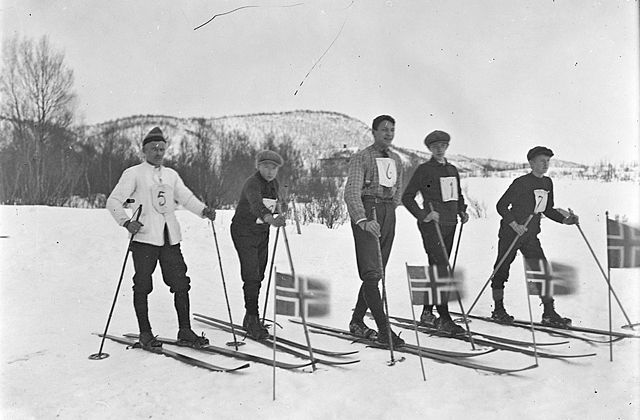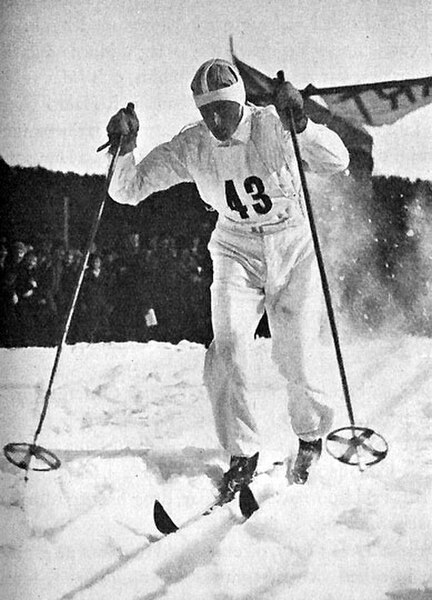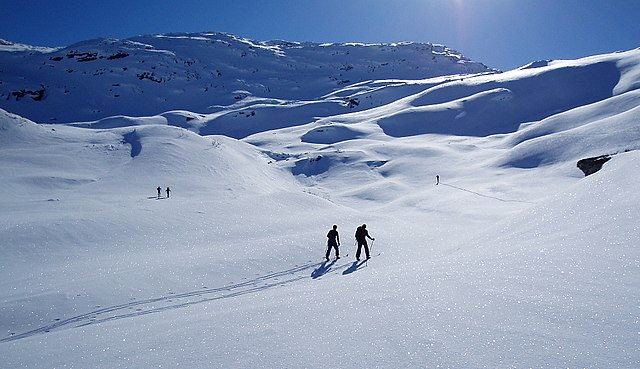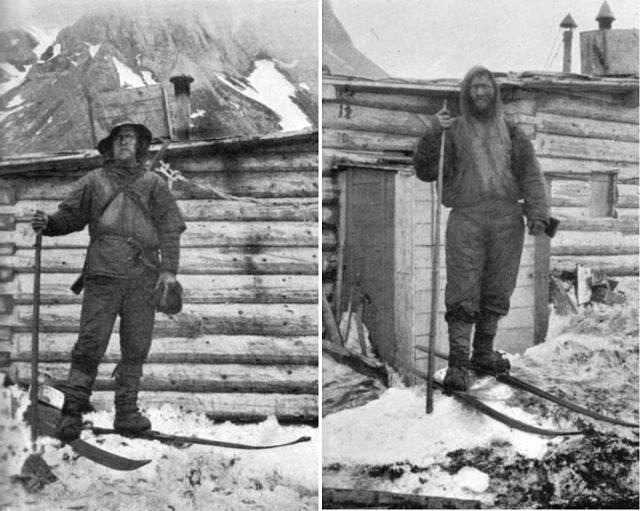Cross-country skiing (sport)
Competitive cross-country skiing encompasses a variety of race formats and course lengths. Rules of cross-country skiing are sanctioned by the International Ski Federation and by various national organizations. International competitions include the FIS Nordic World Ski Championships, the FIS Cross-Country World Cup, and at the Winter Olympic Games. Such races occur over homologated, groomed courses designed to support classic (in-track) and freestyle events, where the skiers may employ skate skiing. It also encompasses cross-country ski marathon events, sanctioned by the Worldloppet Ski Federation, and cross-country ski orienteering events, sanctioned by the International Orienteering Federation. Related forms of competition are biathlon, where competitors race on cross-country skis and stop to shoot at targets with rifles, and paralympic cross-country skiing that allows athletes with disabilities to compete at cross-country skiing with adaptive equipment.
Demino Ski Marathon, 2015
Local championship, Ballangen, Norway, 1925
Swedish competitor, Martin Matsbo, in April 1935
Sverre Stenersen headed for victory in Nordic combined at the 1956 Winter Olympic Games in Cortina d'Ampezzo, Italy.
Cross-country skiing is a form of skiing whereby skiers traverse snow-covered terrain without use of ski lifts or other assistance. Cross-country skiing is widely practiced as a sport and recreational activity; however, some still use it as a means of travel. Variants of cross-country skiing are adapted to a range of terrain which spans unimproved, sometimes mountainous terrain to groomed courses that are specifically designed for the sport.
Cross-country skiers in western Norway.
German Reichswehr military patrol on skis training in the Giant Mountains, January 1932.
Michal Malák skate-skis at a qualifier for the Tour de Ski, 2007.
Arctic travelers, Fridtjov Nansen and Hjalmar Johansen at the camp of Frederick Jackson on Northbrook Island in 1896.








